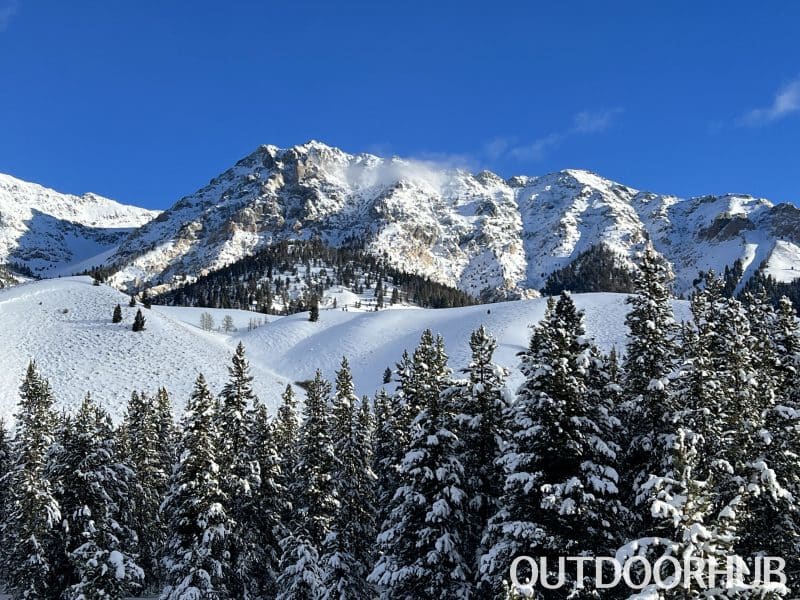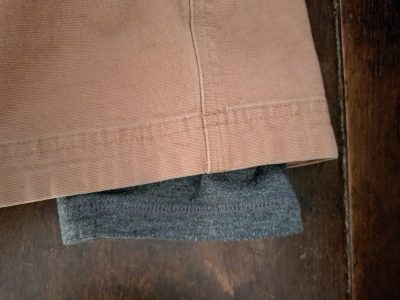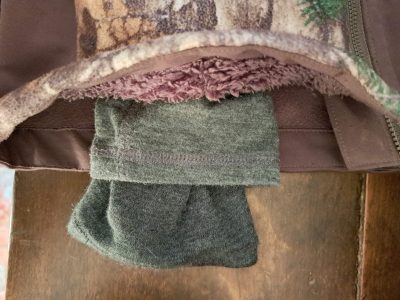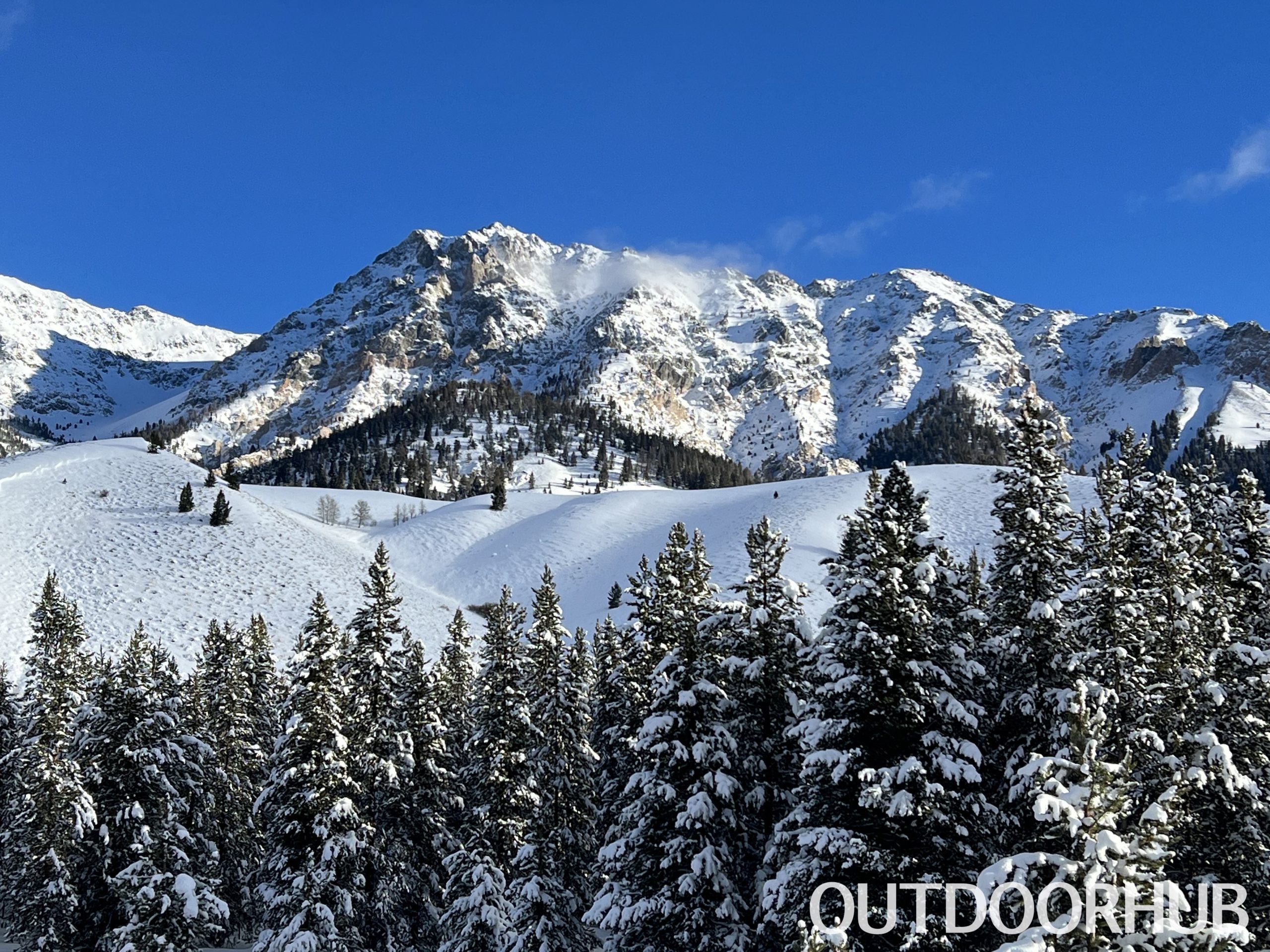Aaron Frimel 12.09.22

Enjoying the outdoors when it’s 65 degrees and sunny is far less complicated than it is during the part of the year we are heading towards. For an outdoorsman, fighting the elements can mean spending hundreds on technical outerwear just to get extra days outside. Does it really have to be that way?
Staying warm is the most common problem for North American outdoorsman and women during the winter months. Although you may not enjoy a meal and cocktail outside in the dead of February in Missouri, there’s a lot to be said for being able to enjoy the added visibility that a fresh snowfall and no leaves on the trees will give you.
So how can someone who doesn’t want to spend hundreds of dollars stay warm outside? Understanding how our clothes work to keep us warm will help you to manipulate your wardrobe to your needs. And no, it doesn’t have to be expensive.
The Science Behind Heat Loss and Retention
Our bodies metabolism is constantly breaking down the food we eat. This is an exothermic, or heat releasing process. When we feel cold, we are feeling the rate of heat loss exceeding the rate of heat generation. Have you ever noticed how much colder an 85F pool feels compared to an 85F day? This is because the water is able to absorb our body heat faster than air, leading it to feel similar to a 45F day.

When it comes to warming up, we need to ensure that the rate of heat generation exceeds the rate of heat dissipation.
One feels comfortable when the rate of heat generation matches heat dissipation. To make this happen, trapping heat near the surface of our skin is the name of the game. Trapping heat is done by trapping the air that your skin is transferring heat to. Animals do this with fur and feather, and we do it with clothing made of fur, feather, and fiber.
So what about these calories are bodies are burning to generate heat? A calorie is the amount of heat needed to warm 1 mL (or gram) of water exactly 1 degree centigrade (important to note that the calories in our food are actually kilocalories). This represents the amount of energy water can absorb before having a measurable response, also referred to as heat capacity. The reason the 85F pool is able to remove heat from our bodies at such a fast rate is because of water’s heat capacity. One of the amazing things about water is that it has an unusually high heat capacity compared to other common compounds. The reason a 95F day with 98% humidity feels hotter than it is, is also due to heat capacity of water. What this means is that water, whether in liquid form or as humidity, is able to increase the rate of heat transfer, whether towards or away from our bodies.
Layering Materials
Polyester/microfiber/fleece
Polyester is lightweight, and can be woven to be warm and tight, or breathable, like a golf shirt. Polyester is hydrophobic, or water repellant, and does a great job at wicking moisture away from the skin. It can start to stink quickly compared to other materials, so it is best used in cases where daily clothes changes are a possibility.

Cotton
Cotton is a fantastic insulator and it breathes well. When cotton gets wet, it can no longer keep you warm. It will also absorb odors. For these reasons, cotton is best worn under a water-repellant layer if one is to be used, but not up against the skin for long durations if sweating will be a possibility.
Wool
Wool has arrived again as a popular cold-weather clothing fabric thanks to the wider availability of softer varieties like Merino. Merino wool is a breathable fabric that can keep you warm when it is cold, doesn’t stink, and can keep you warm when the material gets wet. It also regulates temperature well and doesn’t lead to as much overheating as things like polyester. For this reason, good wool base-layers can be great up against the skin, as insulating layers, and even outerwear if rain isn’t in the forecast.
Rain barriers
Synthetic rain barriers, such as nylon, vinyl, tightly woven wax cotton, or even materials coated with waterproofing materials (Scotchgard) are excellent materials to use to keep your insulating layers dry, when needed. Not all rain barriers are equal, the more impermeable to water the less the insulating barriers underneath will be able to “breathe.” Materials like Tyvek and Goretex were made to be impermeable to liquid but allow for moisture exchange across the barrier when the moisture is vapor form. A material like vinyl will provide a perfectly impermeable barrier to keep the elements out, but it will also keep everything in, as well. That said, the rain barrier layer will be the most exterior layer and the easiest to shed when needed.
Heads, hands, and Feet
These are the parts of your body that tend to get cold the fastest. A good set of insulated boots and wool socks will do wonders for the feet. A wool or synthetic neck gaiter and hat are excellent temperature regulators. Extremities are the first part of our bodies to get cold due to heat loss in other parts of our body. Add poor circulation to the equation for some, and your hands and toes can be the thing that makes you downright miserable. Chemical hand and toe warmers can be a godsend for generating heat at these extremities, but make sure you have the proper insulated clothing to trap it and take advantage of it.
Purpose built outdoor clothes integrate these fabrics into single pieces of clothing
High dollar outerwear is engineered to take advantage of all of these phenomena. A popular outerwear brand markets the construction of their clothing as having a water repellent layer keeps rain out and covers a moisture-breatheable membrane that allows for humidity exchange but keeps water out. This layer covers a layer to break the wind, which covers one or more insulation layers. Separate layers of insulation will provide more heat retention that one equally thick layer of insulation.
America’s favorite canvas work coats are notoriously warm, but not very waterproof. They are made of a thick layer of tightly woven cotton to cut the wind, followed by generous amounts of insulation, and a polyester interior to wick moisture. No water protection is touted, though some will add a coating to the canvas layer to add water repelling properties.
An example of poorly designed thermal wear are cheap fleece jackets. These jackets are able to insulate the body heat against our bodies, but the slightest breeze cuts right through the material and offers no wind protection. Nowadays, most synthetic fleece jackets are paired with a less permeable material so that we get to hold on to that layer of body-heated air a while longer. That said, the same inexpensive fleece jackets can be paired with a windproof layer to make a solid cold-weather system.
So how can we mimic this with clothes we already have?
With this in mind, we can model our clothing layering system to mimic these approaches. A waterproof layer might include a hardshell, or waterproof jacket, which helps cut the wind and keep water out. If windproofing is all that is needed, a tighly woven cotton does a great job. Layers of fleece, flannel, wool, or cotton will help trap layers of air for warmth. Two layers of insulation are better than one layer that is twice as thick. This is because in addition to the size of the insulation layer, there will be a small bit of air between layers holding in heat (increase in heat capacity). A polyester or wool base-layer, not cotton, will be best. Choose polyester if moisture wicking is important and daily clothing changes are possible. Choose wool if daily clothing changes/showers are not possible.
So why buy the high dollar bibs and jacket? These pieces of clothing are engineered for very specific conditions. They will be as light as possible, durable, quiet if needed, and incorporate thoughtful features like zippered vents to allow for temperature regulation. If you’re sitting in a deerstand in the midwest, you may not need many of these features. If you’re chasing elk in the colorado mountains, it will give you a fully integrated, lighter weight solution to your specific set of circumstances. If you do purchase the higher end gear, make sure it fits your very specific set of needs. Outdoor manufacturers are making great gear and it all has a specific application in mind, and there is a set of clothes that will match your circumstances.

